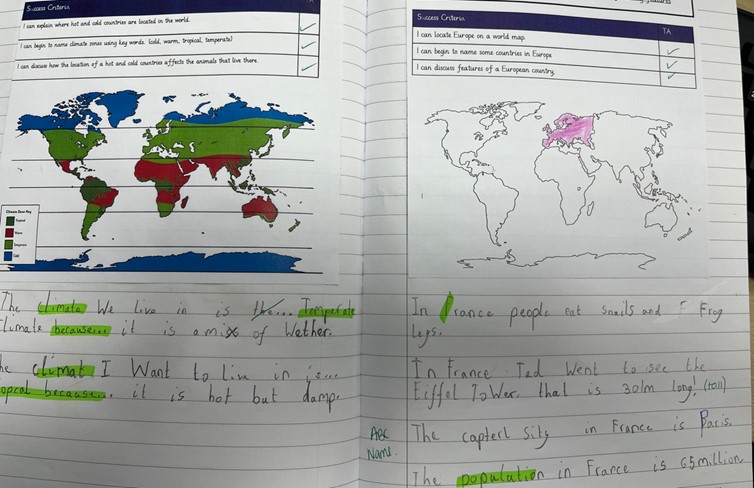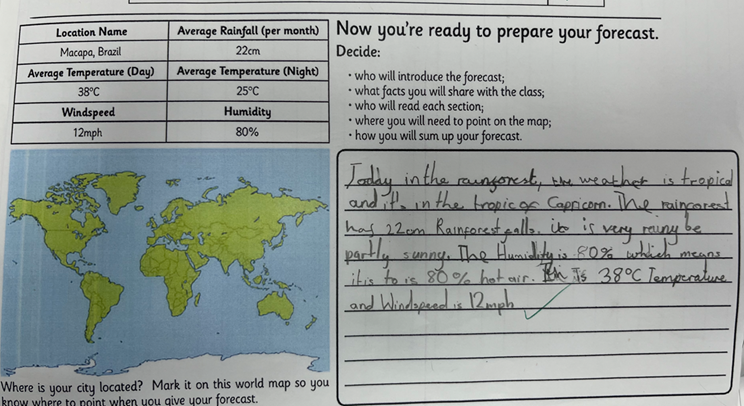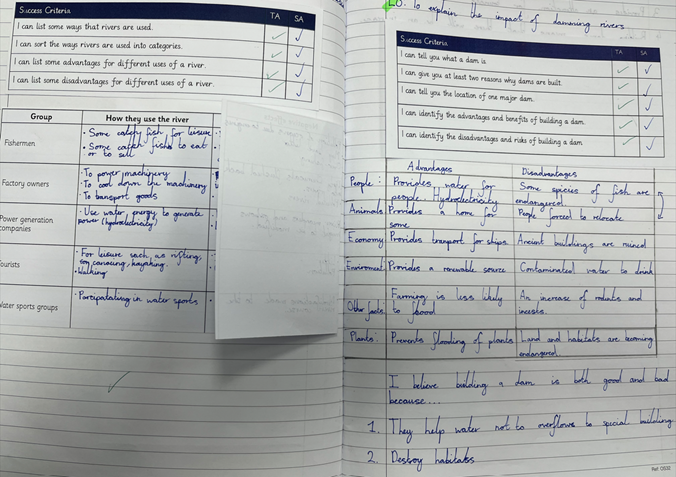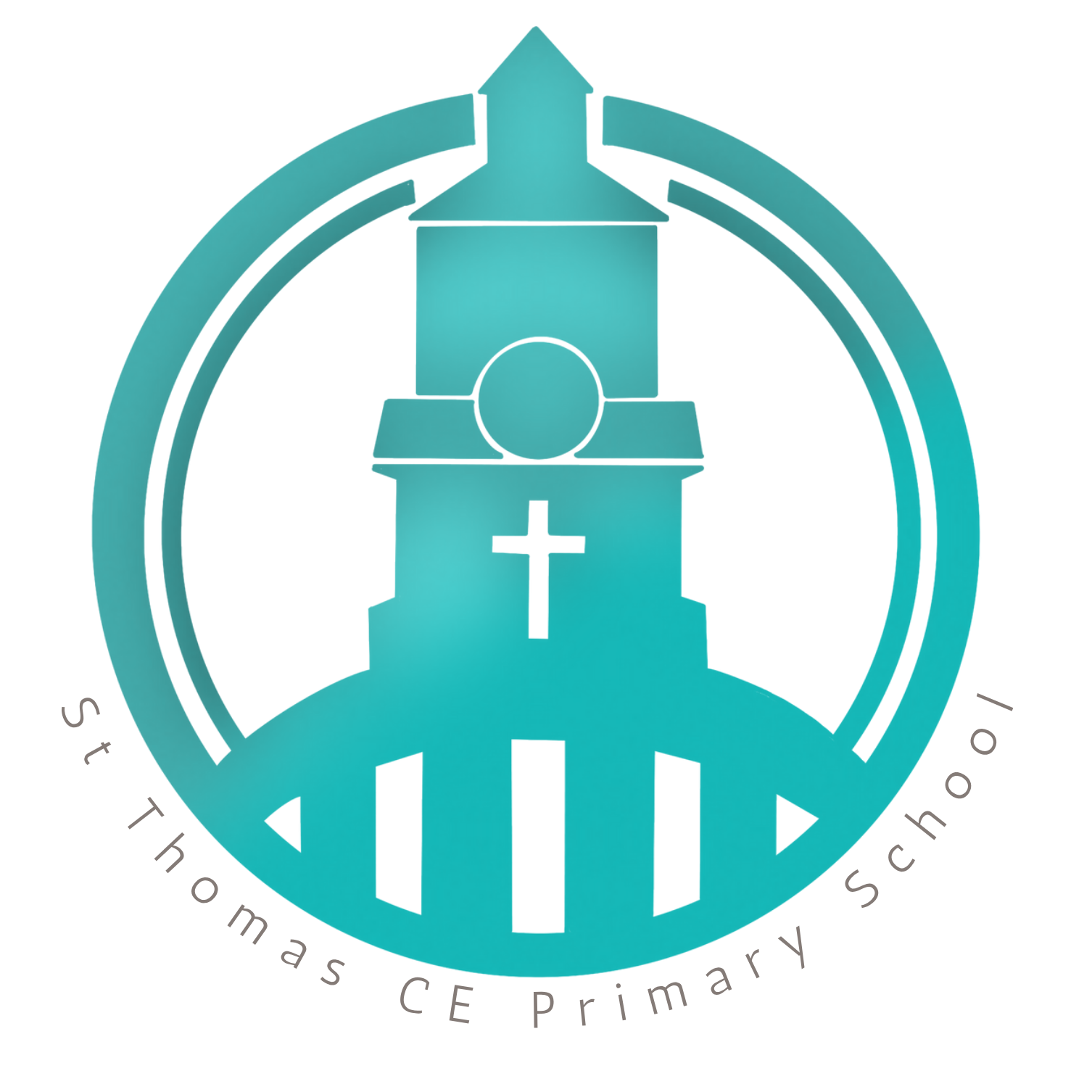Our Learning
Geography

Intent
We have structured and sequenced our lessons to ensure teachers have covered the skills and knowledge required to meet the aims of the national curriculum. The content allows for a broader, deeper understanding of the four areas of geography identified in the curriculum. The intent behind St Thomas using CUSP Geography is that each study draws upon prior learning. For example, in the EYFS, pupils may learn about People, Culture and Communities or The Natural World through daily activities and exploring their locality and immediate environment. This is revisited and positioned so that new and potentially abstract content in Year 1 can be put into a known location and make it easier to cognitively process. Pupils in EYFS explore globes and world locations through their curiosity corners, making links to where animals live. This substantive knowledge is used to remember and position the locations of continents and oceans, with more sophisticated knowledge.
High volume and deliberate practice are essential for pupils to remember and retrieve substantive knowledge and use their disciplinary knowledge to explain and articulate what they know. This means pupils make conscious connections and think hard, using what they know. CUSP Geography is built around the principles of cumulative knowledge focusing on spaces, places, scale, human and physical processes with an emphasis on how content is connected and relational knowledge acquired. An example of this is the identification of continents, such as Europe, and its relationship to the location of the UK.
CUSP Geography equips pupils to become ‘more expert’ with each study and grow an ever broadening and coherent mental model of the subject. This guards against superficial, disconnected and fragmented geographical knowledge. Specific and associated geographical vocabulary is planned sequentially and cumulatively from Year 1 to Year 6. High frequency, multiple meaning words (tier 2) are taught and help make sense of subject specific words (tier 3).
Each learning module in geography has a vocabulary module with teacher guidance, tasks and resources. CUSP Geography is planned so that the retention of knowledge is much more than just ‘in the moment knowledge’. The cumulative nature of the curriculum is made memorable by the implementation of Bjork’s desirable difficulties, including retrieval and spaced retrieval practice, word building and deliberate practice tasks. This powerful interrelationship between structure and research-led practice is designed to increase substantive knowledge and accelerate learning within and between study modules. That means the foundational knowledge of the curriculum is positioned to ease the load on the working memory: new content is connected to prior learning.
The effect of this cumulative model supports opportunities for children to associate and connect with places, spaces, scale, people, culture and processes. CUSP fulfils and goes well beyond the expectations of the National Curriculum as we believe there is no ceiling to what pupils can learn if the architecture and practice is founded in evidence-led principles.

Implementation
In KS1, children begin to use maps and recognise physical and human features to do with the local area, building to using maps to explore the continents and oceans of the world in year 2. Further, in year 2, children will begin to compare where they live to places outside of Europe and ask and answer geographical questions. In KS2, map skills are developed further using digital maps, more keys and symbols and children begin to use more fieldwork skills. Through revisiting and consolidating skills, lessons and resources help children build on prior knowledge alongside introducing new skills and challenge. All children expand on their skills in local knowledge, place knowledge, human and physical geography, geographical skills and fieldwork, as shown in our substantial knowledge map. Across both key stages, children have a range of opportunities to experience geography through practical engaging tasks beyond the classroom.
Each lesson follows the CUSP structure:
-
Connect: Consolidation of previous learning- prerequisites visited to ensure prior knowledge is embedded.
-
Vocabulary: Explicit teaching of unit vocabulary.
-
Explain: Explicit teaching of new knowledge.
-
Example: Live Modelling of new learning (I Do.)
-
Attempt: Guided Practice of new learning (We Do) – Check for understanding.
-
Apply: Independent application of new learning (You Do.)
-
Challenge: Opportunities for deepening their learning and scientific enquiry.

Impact
All children will use geographical vocabulary accurately and understand the different strands of geography, with a deep understanding of the Earth’s key physical and human processes. Children will begin to make relevant links from geography to other curriculum subjects, such as history and science. They will improve their enquiry skills and inquisitiveness about the world around them, and their impact on the world. All children will realise that they have choices to make in the world, developing a positive commitment to the environment and the future of the planet. Children will become competent in collecting, analysing and communicating a range of data gathered. They will be able to interpret a range of sources of geographical information, and they will communicate geographical information in a variety of ways. All children in the school will be able to speak confidently about their geography learning, skills and knowledge. Through ongoing retrieval tasks, spaced retrieval and exit quizzes, teachers assess the children's knowledge and use the results to inform future planning. These are discussed in pupil progress sessions with members of SLT, in order to gain an accurate picture of where our pupil's strengths and weaknesses lie.






